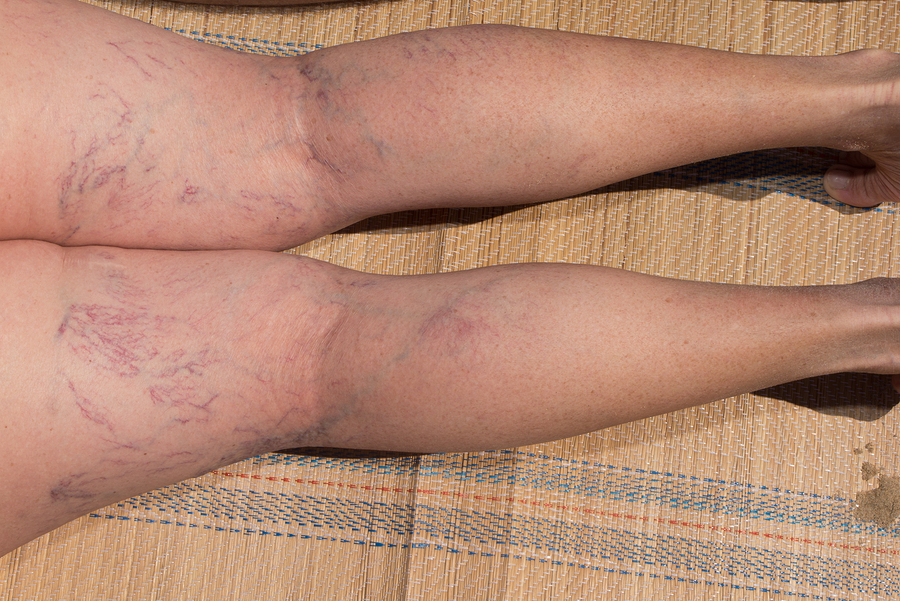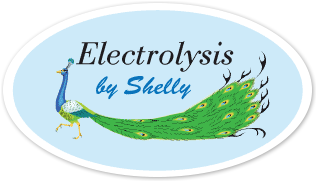Varicose and Spider Veins – Questions Answered

“Why do I have unsightly veins on my legs, yet no one else in my family does?”
“Why do I have unsightly veins on my legs, yet no one else in my family does?” This is one of the most frequent questions I am asked by my clients on a daily basis. In the past, I often wondered about the answer to this question myself, as my sisters do not have unsightly veins, However, I did have spider veins on my legs, which have been successfully eliminated with laser treatments.
My answer to my clients, is the development of their veins can be due to: sun exposure, oral contraceptives, hormone therapy, aging, lifestyle or genetics.
What are varicose veins?
Varicose veins are enlarged veins that can be blue, red or flesh coloured. They often look like cords and appear twisted and bulging. They can be swollen and raised above the surface of the skin and often found on the thighs, back of the calves, and inside of the leg. During pregnancy, varicose veins can form around the vagina and buttocks.
What are spider veins?
Spider veins are like varicose veins, but smaller and closer to the surface of the skin. They are often red or blue and can look like tree branches or spider webs with their short, jagged lines. Mostly found on the legs and face, they cover either a very large or small area of the skin.
What causes varicose veins and spider veins?
Varicose veins can be caused by weak or damaged valves in the veins. The heart pumps blood filled with oxygen and nutrients to the whole body through the arteries. Veins carry blood back from the body to the heart. As your leg muscles squeeze, they push blood back to the heart from your lower body against the flow of gravity. Veins have valves that act as one-way flaps to prevent blood from flowing backwards as it moves up your legs. If the valves become weak, blood can leak back into the veins and collect there. (This problem is called Venous Insufficiency.) When backed-up blood makes the veins bigger, they become varicose. Spider veins can be caused by the back-up of blood, hormone changes, exposure to sun and injuries.
How common are abnormal leg veins?
About 50 – 55% of women and 40 – 45% of men in the United States suffer from some type of vein problem. Varicose veins affect 50% of people aged 50 years or older.
What factors increase my risk of varicose and spider veins?
Factors include:
- Increasing age – as you get older, the valves in your veins may weaken and not work as well.
- Medical history – being born with weak valves increases your risk.
- Genetics – about half of the people with varicose veins have a family member who has them.
- Hormonal changes – occur during puberty, pregnancy and menopause. Birth control pills, or other medicines containing estrogen and progesterone may contribute to the formation of varicose or spider veins.
- Pregnancy – during pregnancy, there is a huge increase in the amount of blood in the body, this can cause the veins to enlarge. The growing uterus also puts pressure on the veins. Varicose veins usually improve within three months after delivery.
- Obesity – being overweight or obese puts extra pressure on your veins, leading to varicose veins and spider veins.
- Lack of movement – sitting or standing for a long period of time may force veins to work harder to pump blood to your heart. This may be a bigger problem if you sit with your legs bent or crossed.
- Sun Exposure – can cause spider veins on the cheeks or nose of a fair-skinned person.
What are the signs of varicose veins?
- Aching pain that may get worse after sitting or standing for a long time
- Throbbing or cramping
- Heaviness
- Swelling
- Rash that is itchy or irritated
- Darkening of the skin (in severe cases)
- Restless legs
How are varicose veins and spider veins treated?
Sclerotherapy – The doctor uses a needle to inject a liquid chemical into the vein, causing it to swell, stick together and seal shut. This stops the blood flow and the vein turns into scar tissue. In a few weeks the vein should fade. This can be done at your doctor’s office.
Surface Laser Treatments – This technique sends very strong bursts of light through the skin onto the vein, making it slowly fade and disappear. Not all skin types and colours can be safely treated with lasers. Generally two to five treatments are needed to remove spider veins on the legs. Laser therapy isn’t usually effective for varicose veins larger than 3 mm in size (or one-tenth of an inch.) You can return to normal activity right after treatment.
Invasive Vein Treatments – Examples are: Endovenous Technique, Surgical Ligation and Stripping, PIN Stripping and Ambulatory Phlebectomy.
Can varicose and spider veins return after treatment?
Sclerotherapy and laser treatments for varicose and spider veins, have very high success rates, compared to surgical treatments. Over a period of years, however, more abnormal veins can develop because there is no cure for weak vein valves. On-going treatment can help keep this problem under control.
The single most important thing you can do to slow down the development of new varicose veins and spider veins, is to wear gradient compression support stockings as much as possible during the day.
